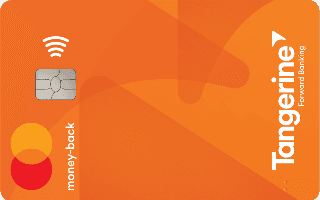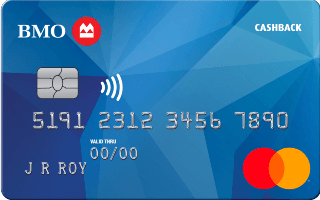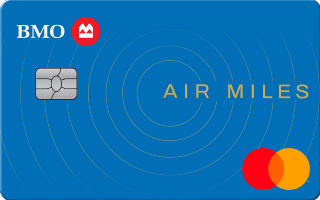Promoted for
Fun Perks

Wondering how old you have to be to get a credit card in Canada? Here’s what you need to know about credit cards for kids and teens plus options you should consider when looking for the best credit card for teens and kids in Canada.
Promoted for
Fun Perks

Promoted for
Cashback

Promoted for
Welcome Offer

Promoted for
Rewards

Although you can’t independently get a credit card under 18 years old, there are a few credit card options for teens under the age of 18. Your teenager may be able to access the benefits of a credit card in the following ways:
Depending on how old your teen is, it’s possible to get a credit card in Canada as an authorized user. When hunting around for the best credit card for teens, consider these cards that may let you add them as an authorized user.
| Card | Minimum age | Annual fee | Purchase rate | ||
|---|---|---|---|---|---|
Scotiabank SCENE+ Visa Card | 16+ | $0 | 20.99% | ||
BMO AIR MILES Mastercard | 13+ | $0 | 21.99% | ||
BMO CashBack Mastercard | 13+ | $0 | 21.99% | ||
SimplyCash Preferred Card from American Express | 13+ | $119.88 | 21.99% | ||
RBC Cash Back Mastercard | 14+ with the Family Card option | $0 | 20.99% | ||
Tangerine Money-Back Credit Card | 14+ | $0 | 20.95% | ||
TD Rewards Visa Card | No restriction | $0 | 19.99% | ||
CIBC Aeroplan Visa Card | 13+ | $0 | 20.99% |
You can apply for a credit card on your own when you are the age of the majority (either 18 or 19 years old depending on your province or territory). That said, teens can become authorized users on select credit cards in Canada when they’re as young as 13 years old.
You have to be 18 years old to get a credit card on your own in: Alberta, Manitoba, Ontario, Prince Edward Island, Quebec and Saskatchewan.
You have to be 19 years old to get a credit card on your own in: British Columbia, New Brunswick, Newfoundland and Labrador, Northwest Territories, Nova Scotia, Nunavut and Yukon.
Yes, a 17 year old can get a credit card in Canada when they sign up as an authorized user on their parent’s credit card or prepaid card account. But a 17 year old teen cannot sign up for a credit card on their own until they turn the age of the majority.
Credit cards in Canada, like the BMO AIR MILES Mastercard, allow users as young as 13 to be added as an authorized user.
While you need to be the age of the majority to get a credit card in Canada on your own, there are different options for children and teens when they sign up with parents. And the type of credit card best suited for your child may depend on their age.
Use these guidelines to help ease your child into managing the responsibility of spending money on credit depending on what age your child gets a credit card in Canada.
During this time, teach your tween about the concept of a credit limit. Load the card with more money than your tween actually needs and make that amount the “credit limit.” Then instruct them to keep spending well below that limit.
The point is to teach your tween how to keep their credit utilization ratio low (how much credit they use compared to how much credit they have access to). For prepaid credit cards for teens, consider an option like Mydoh, which allows you to monitor spending.
Teach your teen how to make card payments on time. Set up automatic payments from your account so you never miss a payment on your teen’s card. Meanwhile, ask your teen to repay you monthly by a certain date. This helps them learn how to make card payments on time. If they miss a due date, neither their nor your credit score will drop — your automatic payments have you covered.
Encourage your teen to pay off their full balance each month. This is a great habit that will keep them out of debt later. While you’re at it, praise your teen for keeping their credit utilization ratio low.
You might think your child is far too young to use a credit card. But you’ll find three big reasons why it could be a good idea.
After adding your teen as an authorized user, you have control over their account and can see how they use their card. With insight into their spending, you can more effectively teach them solid financial habits. It’s better for them to learn from you now than figure everything out on their own later.
Most people start with a brand-new credit history when they’re ready to get a credit card. This usually means they’re limited to student cards and secured cards, both of which typically come with limited features.
You can help your teen build an impressive credit history before they reach adulthood. Just add them as an authorized user on your account and consistently make payments on time. When they turn 18, their credit may be strong enough to expand their card options considerably.
Sometimes you could forget to give your kid cash for meals at school, transportation or supplies. Getting your kid a credit card can help you avoid unpleasant situations and avoid cash theft.
Your teen’s credit card may offer cash back on their purchases or rewards points that can be redeemed for merchandise, statement credit, travel perks and more. If your child becomes an authorized user on your account, your combined spending could make rewards accumulate more quickly.
Before adding your teen to your card as an authorized user, consider how responsible you are as a cardholder. Why? Because your teen’s fortunes will rise and fall with yours. If you pay on time, your teen’s credit will improve. If you consistently miss payments, you’ll damage your teen’s credit.
Bring your son or daughter along for the ride if you’re on top of your credit card payments. But if you have trouble keeping up, it’s probably better not to add authorized users at all.
To apply for a credit card, you must be at least the minimum age of majority in the province or territory in which you live (either 18 or 19). However, you can be added as an authorized user to another credit card account prior to that.
Becoming an authorized user is your sole option for getting a credit card for kids. This means you’re allowed to make purchases with someone else’s credit card account, typically with your own card in your own name.
In this case, the primary cardholder is held liable for your balance. And if they pay the balance on time, it can positively affect your credit score.
But don’t get wild with your spending. If the primary cardholder fails to pay their balance, it can stain your credit score for years to come.
You can apply for a credit card if you’re 18 to 21 years old, but you must prove you can independently pay your card bill. Depending on the provider, you may be able to report income such as scholarships and grants on your credit card application. You can also report wages, if you have a job.
Typically, credit card providers ask for information showing you can consistently handle repayments. Two of the most important factors that help lenders determine if you’re approved are your credit score and annual income. You have better approval odds if you have a score of at least 650 and a debt-to-income ratio below 36%.
You can help your child follow these steps to apply for a credit card:
If approved, you should receive your new card in the mail within one or two weeks. Follow the instructions included with the card to activate and begin using it. New credit cards can usually be activate online, over the phone or, for bank credit cards, by visiting a local bank branch.
While you still have them under your wing, teach your teen how to avoid trouble with a credit card. Here are a few common pitfalls they should know about.
A cardholder can make only the minimum monthly payment on their credit card. However, financial experts argue that this is one of the worst features of using a credit card. (The worst is to make your payments late.) Paying the minimum allows interest to snowball and debt to accumulate.
Teach your teen they should avoid spending close to their credit limit. Carrying a high balance puts one in danger of incurring over-limit fees and accumulating high debt. Many experts recommend keeping spending under 30% of one’s credit limit.
This is a sure path to decreasing a credit score. Because your teen is an authorized user on your account, you can protect them by paying your card bill as usual. But if you see signs your teen may pay late, it’s best to nip the problem in the bud.
Teach your kids how to keep their credit card information safe. Although credit card fraud can happen even if you take all necessary precautions, it’s a good starting point for your kid to learn how to protect their credit cards.
There are a number of ways for a teenager to qualify for a credit card. Your best bet is to help your teen apply for a secured or prepaid credit card. You may also be able to sign them up as an authorized user on your account, but you should only do so if you have good credit card habits yourself. Always compare cards to find the best fit for you and your teen’s needs.
Shop with partners retailers to earn accelerated cashback with the Neo Mastercard.
Despite your credit history, it is possible to get a credit card without a credit check. Here’s how.
Check out the best credit cards for fair credit, and learn how a fair credit score of 560-659 can impact your card options.
Do you travel, work or spend money in the US frequently? Find out if a US dollar credit card is the right fit for you.
Going abroad and wondering whether you can use your credit card while travelling? Here’s the lowdown on credit cards vs. cash, fees, and which cards to get.
Find out how you can apply for an instant approval credit card in Canada and get a response within 60 seconds.
Discover the features, fees and eligibility requirements of the most prestigious credit cards in Canada.
Compare credit cards for temporary residents and learn how to apply for one in Canada.
Compare some of the top low-interest credit cards on the market, and find out how these types of cards work.